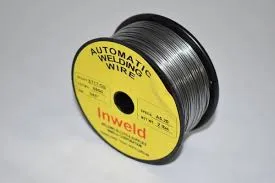Exploring the Characteristics and Applications of J421 Welding Rods for Optimal Performance
Understanding Welding Rod J421 A Comprehensive Overview
Welding is a crucial process in metal fabrication that involves joining materials, often metals or thermoplastics, through the application of heat and pressure. One essential component in the welding process is the welding rod. Among various types of welding rods, the J421 welding rod plays a significant role in certain applications due to its unique properties and advantages.
What is J421 Welding Rod?
The J421 welding rod is a type of coated electrode primarily used in shielded metal arc welding (SMAW). This electrode is classified under the AWS (American Welding Society) specifications and is commonly referred to as a mild steel electrode. The J in J421 denotes different characteristics such as the type of coating and the type of weld deposits that the rod can produce.
The numeral 421 indicates the tensile strength and weldability of the electrode. Specifically, the J421 welding rod typically features a tensile strength of approximately 70,000 psi and can be used for a variety of mild steel applications, making it versatile in both industrial and DIY settings.
Composition and Characteristics
The J421 electrode consists of steel with a specific chemical composition designed to promote excellent welding characteristics. The coating on the rod is usually made up of a flux that facilitates a clean weld environment by producing a shielding gas when heated. This gas protects the molten weld pool from atmospheric contamination, which is vital for achieving a high-quality weld.
Furthermore, J421 rods tend to have a smooth arc, which makes them user-friendly, especially for beginners. They also have excellent slag removal properties, which simplifies the post-welding cleanup process. The ability to create strong, high-quality welds with minimal spatter is a hallmark of this welding rod.
Applications of J421 Welding Rod
The versatility of the J421 welding rod makes it suitable for a variety of applications. It is commonly used in
welding rod j421

1. Structural Fabrication J421 rods are ideal for joining structural steel components like beams, columns, and frames, making them vital in constructing buildings and bridges.
2. Maintenance and Repair The durability and strength of the welds produced with J421 rods make them a popular choice for repair work, especially in heavy machinery and automotive sectors.
3. Industrial Projects These rods find applications in various industries, including manufacturing, where they can be utilized for fabricating parts and components.
4. Home Projects Enthusiasts and DIYers often use J421 rods for home-based welding projects, benefiting from their ease of use and reliable results.
Advantages of Using J421 Welding Rod
One of the primary advantages of using the J421 welding rod is its ability to produce strong and clean welds with minimal effort. This characteristic makes it an excellent choice for both experienced welders and novices looking to develop their skills. The rod’s high resistance to cracking and its ability to withstand tough environmental conditions further enhance its appeal.
Additionally, J421 welding rods are readily available and tend to be cost-effective, making them a popular choice among welders looking to balance quality and affordability.
Conclusion
In summary, the J421 welding rod stands out as a reliable and versatile option within the realm of welding electrodes. Its suitable tensile strength, ease of use, and broad applicability make it an essential tool for both professional welders and hobbyists. Understanding the properties and applications of the J421 welding rod allows welders to make informed decisions, ultimately leading to successful and high-quality welds in various projects. Whether it’s structural work or a home repair, the J421 welding rod is sure to meet the needs of welders across different fields.
-
Best Hardfacing MIG Wire for Sale High Durability Welding SuppliesNewsJun.10,2025
-
ER70S-6 MIG Welding Wire Supplier High Quality China Welding Wire ManufacturerNewsJun.10,2025
-
Premium Aluminum Flux Core Wire China Manufacturer FactoryNewsJun.10,2025
-
Premium Cast Iron Welding Electrodes for Superior BondsNewsJun.10,2025
-
Premium 309L MIG Wire High Strength & Corrosion ResistantNewsJun.10,2025
-
Stainless Steel Welding Rod Types Complete Guide to Corrosion ResistanceNewsJun.09,2025


